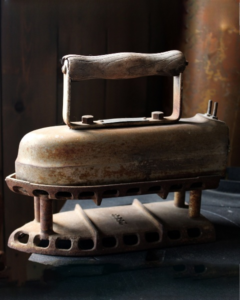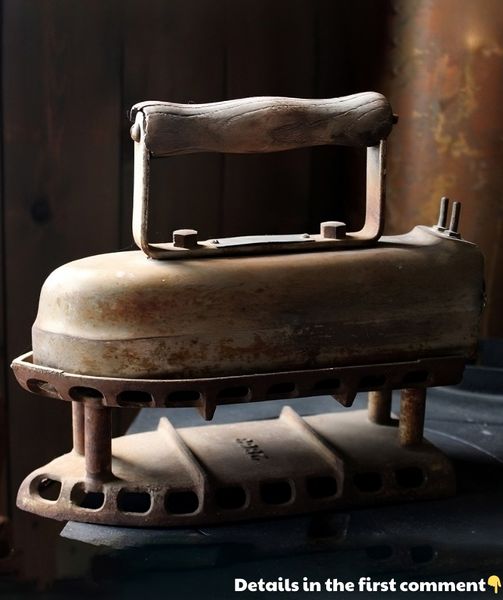Smoothing Iron – 1882
When we think of groundbreaking inventions that have shaped the course of human civilization, the smoothing iron might not be the first thing that comes to mind. This humble household appliance, often overshadowed by the more glamorous technological marvels of our time, has nevertheless played a pivotal role in shaping the very fabric of our lives – both literally and figuratively.

Yet, as we delve into the rich history and remarkable evolution of the smoothing iron, we’ll soon discover that this unassuming tool has a story that is anything but ordinary. From its ancient origins in the goffering irons of Greece and the heated scoops of China, to the sleek, high-tech steam irons of the modern era, the smoothing iron has undergone a captivating transformation that has left an indelible mark on the worlds of fashion, culture, and even domestic life.
So, prepare to embark on a captivating journey through the annals of history, as we uncover the secrets of this unsung hero and witness the remarkable ways in which the smoothing iron has managed to shape the very course of human civilization.
The story of the smoothing iron begins in the ancient world, where the earliest iterations of this tool can be traced back to the Greeks and Romans. In ancient Greece, a device known as a “goffering iron” was used to create intricate pleats and folds on the robes and garments of the era. This round metal bar, heated over an open flame, allowed weavers and tailors to add a touch of sophistication and elegance to the clothing of the time.
Fast forward a few centuries, and we find the ancient Romans experimenting with more recognizable forms of the smoothing iron. One such device was a flat metal paddle that users would beat against the fabric, in the hopes of removing wrinkles and creases. Meanwhile, across the globe, the ancient Chinese had developed their own unique solution – a heated scoop filled with hot coals or sand, which they would gently rub over their clothing to achieve a smooth, wrinkle-free finish.
As the centuries passed, the smoothing iron continued to evolve, with the first true “flatirons” emerging in Europe during the 1300s. These simple yet ingenious tools consisted of a smooth metal plate affixed to a handle, which would be heated over an open flame and then applied to the fabric. To prevent soot or char from staining the garment, users would often place a layer of cloth between the iron and the material being pressed.
The flatiron remained the standard for several hundred years, until the development of the “box iron” in the 1500s. This innovative design featured a flat-bottomed metal box that could be filled with hot coals, bricks, or other heating elements, eliminating the need for the protective cloth layer. This advancement not only made the ironing process more efficient but also helped to keep the iron’s surface cleaner and better-maintained.



